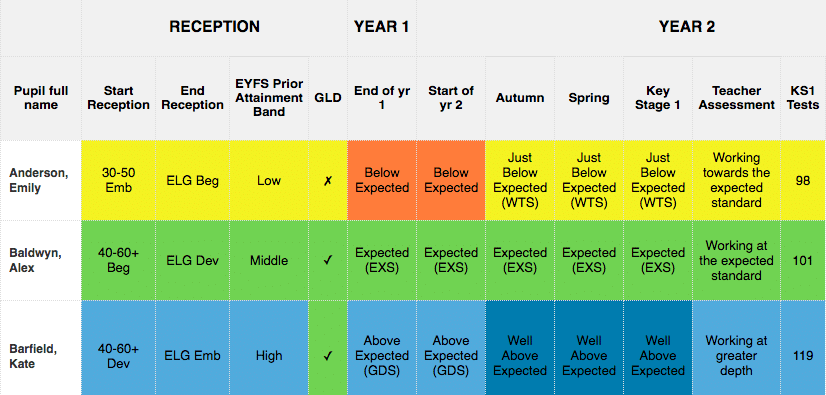Point-in-Time Assessment – our most popular approach
Pupil Asset will work with your school to create an assessment model that meets all of your needs. The Point-in-Time Assessment (or PITA model) is an increasingly popular alternative to tracking attainment and progress in a levels-like, linear fashion. This approach suits the new National Curriculum with its emphasis on broadening and deepening understanding within a year group.
Unlike a linear model where pupils are expected to progress through a number of steps/points along a ‘flight path’ (think ‘Emerging/Developing/Secure’), in a Point-in-Time Assessment, learning is assessed against what has been taught to date, and learner’s achievements are compared against the expected levels of understanding and competencies relative to that ‘point in time’.

In a linear model, the term at Expected refers to a pupil having understood the majority of the curriculum. This typically means that a child cannot be regarded as working at Expected or Greater Depth until the summer term because they have not been taught enough of the curriculum yet. In a PITA approach, being at Expected means that a pupil is working comfortably with what has been taught to date.
Point-in-Time helps teachers be clear about:
- The pupil’s starting point.
- How successful pupils are at the things they have been taught so far.
- How on track they are to reach their end-of-year expectations.
- How much support learners need to be successful.

For more information on using Point-in-Time Assessment in Pupil Asset, click here or contact our Sales Team to arrange a demo.
Related information
- Assessment Approaches
- Data Analysis
- Early years
- Features
- Formative Assessment
- Frameworks
- Key Stage 1 and 2
- Key Stage 3 and 4
- Primary
- Secondary
- Summative Assessment